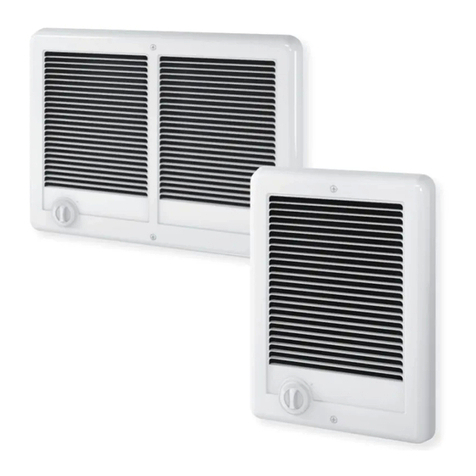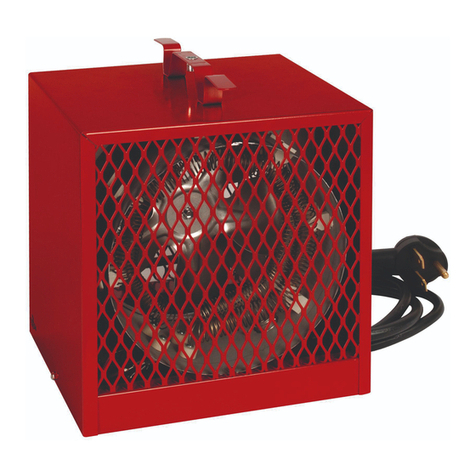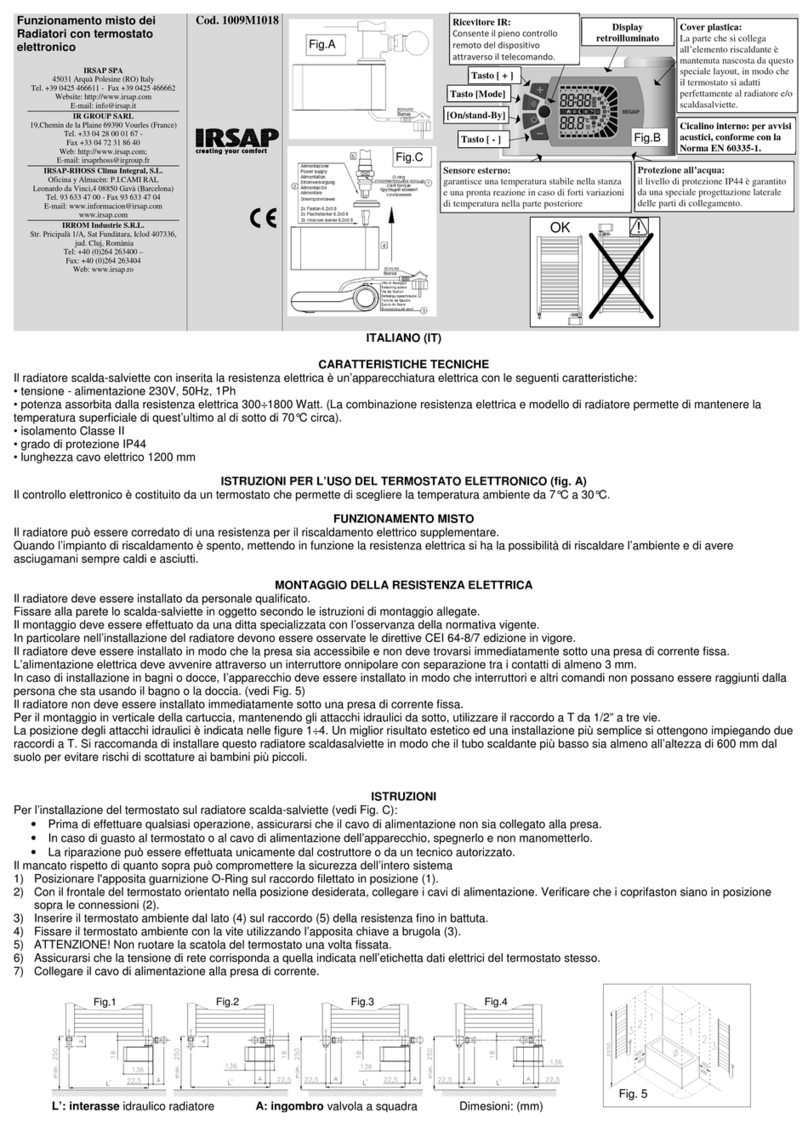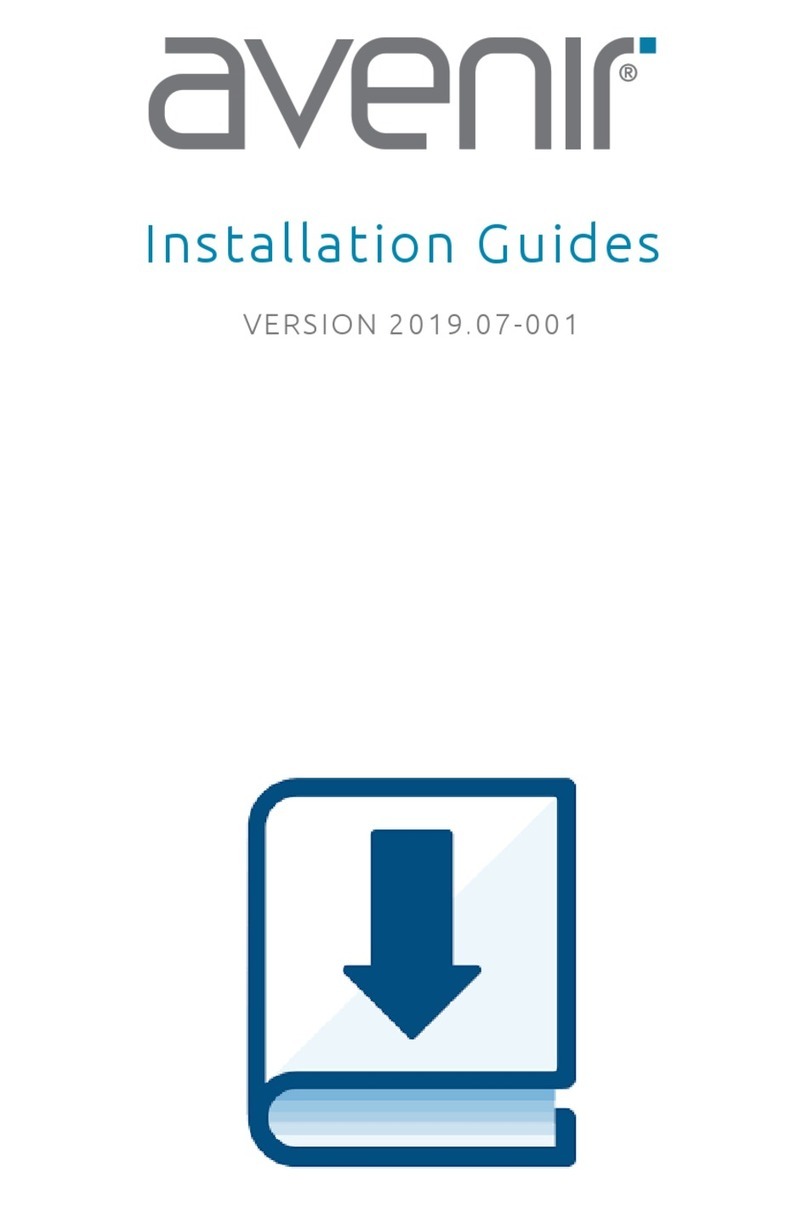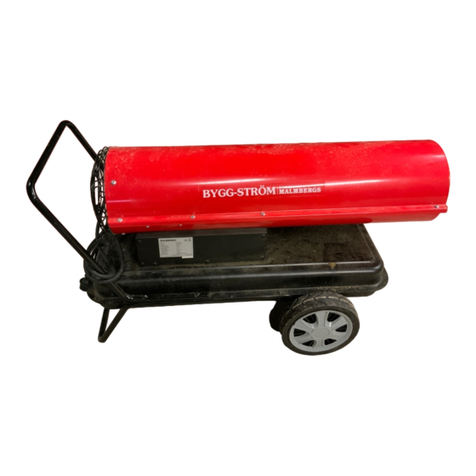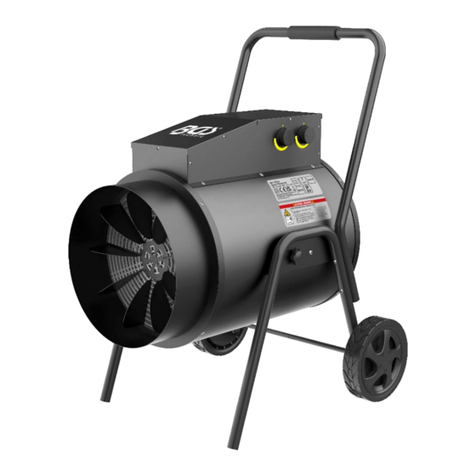Energy Wise Solutions HS-LP-OUT User manual

Flame Heater
FH1000 SERIES
ASSEMBLY INSTRUCTIONS
FOR OUTDOOR USE ONLY
PLEASE READ INSTRUCTIONS CAREFULLY BEFORE ASSEMBLY
RETAIN THIS MANUAL FOR FUTURE REFERENCE
WARNING
HAZARDOUS FIRE OR EXPLOSION
MAY RESULT IF INSTRUCTIONS ARE
IGNORED
It is the consumer's responsibility to see
that the patio heater is properly
assembled, installed, and taken care of.
Failure to follow instructions in this
manual could result in bodily injury
and/or property damage.
PRECAUTIONS
• Leak test all connections after each
bottle refill
• Never check for leaks with a match or
open flame
• Do not store or use gasoline or other
flammable vapors and liquids in the
vicinity of this or any other appliance
• Any LPG bottle not connected for use
shall not be stored in the vicinity of
this or any other appliance
FOR YOUR SAFETY
IF YOU SMELL GAS:
• Turn off gas supply at bottle
• Extinguish all naked flames; do not
operate any electrical appliances
• Ventilate the area
• Check for leaks as detailed in this
manual
• If odor persists, contact your dealer or
gas supplier immediately

GB
2
TECHNICALSPECIFICATIONS
Item Name:Gas flame heater Model Number FH1000 Series
Heat Output 9.3 kW CE Certificate NO. 845BS-0016
Country of destination category pressure
CZ, DK, EE, FI, IS, NL, NO, SE, LT, LV,
SI, SK, CY, MT: I3B/P 30mbar
BE, ES, FR, GB, GR, IE, LU, IT, PT,
CH : I3+ Butane: 28-30mbar
Propane: 37mbar
AT, DE: I3b/P 50mbar
PRECAUTION
Warning:
The use of this appliance in enclosed areas can be dangerous and is PROHIBITED .
Using this product in an enclosed area may cause injury, death or property damage.
Read the instructions before using this appliance, This appliance must be installed in
accordance with instructions and local regulations
Warning:
1) For use outdoors or in amply ventilated areas
2) An amply ventilated area must have a minimum of 25 %
of the surface area open.
3) The surface area is the sum of the walls surface.
Do not use the heater in an explosive atmosphere.
Keep the heater away from areas where gasoline or other flammable liquids or vapours are
stored.
Prior to use, check for damaged parts such as hoses, regulators, pilot or burner.
Do not move the heater when in operation
Shut off the valve at the gas cylinder of the regulator before moving the appliance.
Disconnect LPG bottle before moving the heater.
Do not attempt to alter unit in any manner.
Example: Using the heater without the top canopy reflector or radiant screen.
The appliance shall not be used in basements or above ground level.
It must always be placed on a solid and level surface.
Always ensure there is ample fresh air ventilation.
Never replace or substitute the regulator with any regulator other than the factory suggested
replacement.
Do not clean the heater with cleaners that are combustible or corrosive.
Do not paint radiant screen, control panel or top canopy reflector.
All leak tests should be done with a soapy solution. NEVER USE AN OPEN FLAME TO
CHECK FOR LEAKS.
The LP gas bottle valve and the regulator should be turned off when the heater is not in use.
Do not use when it is raining, always be carefully not let any liquid splash to the glass tube
when the heater is working.
Keep the children away from the heater, always be carefully not to knock over the heater,
which will break the glass tube and might cause injury.
The following clearance distances are required for safe operation when using this heater. It
is important that you keep these distances away from combustible materials:
Minimum clearance to adjacent combustibles : From top: 61cm, from sides: 60cm
At least once a year, the unit should be inspected for spiders, spider webs or other
insects.
Check the heater immediately if any of the following exists:
1. The smell of gas.
2. The heater does not reach temperature.

GB
3
3. The burner makes popping noise during use (a slight popping noise is normal when the
burner is extinguished after use).
If you smell gas, turn off the valve immediately. If smell persists, contact the dealer or gas
supplier immediately.
The propane hose with regulator assembly shall be located out of pathway where people
may trip over it or in areas where the hose will not be subject to accidental damage.
Children and adults should be aware of the high surface temperature hazard, and should
keep a safe distance away to avoid clothes burning or igniting.
Young children should be carefully supervised when they are in the area of the heater.
Clothing or other flammable material should not be hung from the heater, or placed on or
near the heater.
Any guard or other protective device removed for servicing the heater must be replaced prior
to operating the heater.
Installation and repair should be carried out by a qualified service person. The heater should
be inspected before use and cleaning may be required at least once a year, or as necessary.
It is imperative that control compartment, burner and circulating air passageways of the
heater be kept clean.
Keep the appliance area clear of combustible materials such as gasoline and other
flammable vapors and liquids.
Do not obstruct the flow of combustion and ventilation air,
Do not obstruct the ventilation holes of the cylinder housing.
Keep the ventilation opening of the bottle enclosure free and clear of debris. At least once a
year, the unit should be inspected for spiders, spider webs or other insects,
NOTE: PLEASE READ THE FOLLOWING SAFETY RULES
When changing the bottle, the appliance must be in a amply ventilated area, must be away from
any ignition source (candle,cigarettes,other flame producing appliances…),
Avoid twisting the flexible tubing while using. NEVER use the appliance near a fire hazard.
Warning: The appliance must ONLY be used for outdoor use.
Warning: The installation of fixed appliances shall only be carried out by competent persons
and be in accordance with the relevant Codes of practice. Regularly check the gas hose and if
necessary, replace the gas hose.
Warning: This appliance requires a regulator. Check with your gas supplier.
FOR YOUR SAFETY
If you smell gas:
Shut off the gas to appliance.
Extinguish any open flame.
If odour continues, immediately call a gas supplier or engineer.
Combustible materials are considered to be wood, compressed paper, plant fibers, plastic,
Plexiglas or other materials capable of being ignited and burned. Such materials shall be
considered combustible even though flame proofed, fire-retardant treated or plastered. Additional
clearance may be required for glass, painted surfaces and other materials which may be
damaged by radiant or convection heat.
The hose assembly should be properly located out of pathways where people may trip over it.
The hose must be protected from contact with hot or sharp surfaces both during use and while in
storage. The hose assembly should be visually inspected prior to each use of the heater. If
excessive abrasion or wear is evident, or the hose is cut, it must be replaced prior to operating
the heater. The replacement hose assembly may be obtained from the manufacturer.
DO NOT use any pressure regulator or hose assembly other than those supplied with the
appliance or provided by your gas supplier. Replacement pressure regulator and hose assembly
must be those specified. Replacement parts may be obtained from the manufacturer or your local
sales representative.
The valve outlet must be maintained in good condition. When the bottle is not in use, be sure to
cover it with a dust cap. A leak test should be performed with soapy water whenever connecting a
new bottle. NEVER use a match to test for leaks.

GB
4
The propane bottle must be turned off whenever the heater is not in use. When the heater is to
be stored indoors, the propane bottle and the heater must be disconnected and the bottle stored
in accordance with the Standard for Storage and Handling of Liquefied Gases. (i.e.: Not indoors,
but in a dry and well ventilated area.)
The patio heater has been designed with several safety features which include a tip over switch.
Any modification to the heater not described in the installation instructions may compromise the
safety of this appliance. Special concern is as follows:
(1) DO NOT shorten post length;
(2) DO NOT bypass thermocouple safety;
(3) DO NOT operate heater without a reflector;
Clothing or other flammable materials should not be hung from the heater, or placed on or near
the heater. The area above the post may be extremely hot. Direct contact with these metal
surfaces should be avoided in order to prevent burns or clothing ignition.
INSTALLATION
Important Safety Rules:
This appliance is for OUTDOOR USE ONLY
1. This appliance shall not be installed or used indoors, in buildings, garages or any other
enclosed area.
2. DO NOT place articles on or against this appliance.
3. DO NOT use or store flammable materials near this appliance.
4. Children and adults should be alerted to the hazards of high surface temperatures, burns and
clothing ignition.
5. Children should be carefully supervised when they are in the area of the appliance.
6. NEVER hang anything including clothes or other flammable items on the appliance.
7. DO NOT operate this appliance unless it is fully assembled with reflector in place.
8. DO NOT SPRAY AEROSOLS IN THE VICINITY OF THIS APPLIANCE WHILE IT IS IN
OPERATION.
9. Installation and repair should be done by a qualified service person. The appliance must be
inspected before use and at least annually by a qualified service person. More frequent
cleaning may be required as necessary. It is imperative that control compartment, burners
and circulating air passages of the heater be kept clean.
10. In case of violent wind particular attention must be taken against tilting of the appliance
PARTS LIST-1
Part NO. Part Name QTY Picture Remarks
1 Middle Plate 1
2 Screwdriver 1
3
Bottom Plate 1
4 Lower
Support 4
5 Upper support 4

GB
5
PARTS LIST-2
Part NO. Part Name QTY Picture Remarks
6
Upper Plate 1
7
Plate cover 1 Preassembled in
the Middle plate
8
Glass tube 1
9 Damper 1
Preassembled in
upper plate
10 Reflector 1
11
Lower
protection
guard
4
12 Match clip 1
13 Upper
protection
guard
4
14 Fixing bracket 4
15 Side panel 3
16 Front panel 1 A chain is
preassembled in
this panel
17 Screw M5x8 54 All preassembled
in relative parts
18 Knob 1
19 Chain 1 Preassembled in
the front panel
20 Wheel kit 1
Optional part
21 Bottle belt 2
Optional part
22 Regulator 1
23 Hose 1

GB
6
HEATER ASSEMBLY
Tools Required:
1 Phillips head screwdriver, 1 adjustable spanner
1
Remove plate cover (7) with 4 screw (17)
2
3 4

GB
7
5 6
7

GB
8
8
If the wheel kit is
supplied, fix it at the
back of the base as
shown.
9

GB
9
OPERATION
Preparation:
You will need to purchase a propane gas bottle designed to be
used with the regulator purchased or supplied. For correct
operation of the gas system follow the instructions supplied with
the regulator supplied or purchased.
Connect the hose to the hose connector in the control box
Warning:
Always test the hose for leaks with soapy water at the end
of all connections.
The hose used for this heater must comply with standard EN
1763-1:2001, and the hose must not be longer than 1.5m
Warning:
Never use the heater while it is raining, the glass tube could break when it
suddenly meets water.
Always turn the heater OFF if it starts to rain.
Never splash any liquid onto the glass tube when the heater is working
The glass tube will be extremely hot whilst it is working, never try to
touch it and keep children away from the heater.
Always ensure the heater stands horizontally, and firmly on a hard
standing surface, the Glass Tube could break, if the heater was to fall
over.
Never use the heater if the glass tube is damaged in any way.
If the wheel kit is supplied
If the heater is to be moved, to avoid the Gas Bottle from damaging the side panels, it is
recommended the belts provided are set up as follows:
LoopStrappingthroughslots
inbottomshelfandsecure
overtopofpropanetankas
illustrated
Warning:
When the Gas Bottle is properly tied in by the Belts, and the Heater is moved, the Gas
Bottle might still damage the panels, if the Heater is tilted in other directions.
LIGHTING INSTRUCTIONS
Check and ensure that an AA battery is
inside the ignition chamber and has power.
Ensure the anode (+) faces outside.

GB
10
El
ec
t
r
i
c
i
gn
it
er
Li
g
hti
ng
1. Ensure that the control knob is in the OFF position. Slowly
open the gas bottle valve.
2. Press and turn the control knob to LIGHT position, push the
igniter to generate spark whilst keeping the control knob
pressed in.
3. Check for pilot flame through the glass tube. If pilot does not
light, turn control knob to ‘OFF’ position, wait 5 minutes and
try again from the start. Several attempts may be necessary.
4. With the pilot alight, keep the control knob depressed for 15
seconds then turn the control knob to ‘LOW’ position.
5. For maximum heat turn control knob to ‘HIGH’
position.
6. To turn heater off, turn the control knob to ‘OFF’ position.
OFF
LIGHT
LOW
HIGH
If the Electric igniter fails, the heater can be lit by a match
Match Lighting
A long reach match is needed.
Hold the lit match through the hole in the front of the control box, attach the
flame of the match to heater’s pilot whilst pressing and turning the Control
Knob to LIGHT position .
MAINTENANCE/STORAGE
CLEANINGAND MAINTANCE
NOTE: IMPORTANT
1) ALL MODELS – UPPER AND LOWER PROTECTION GUARDS
THE GUARDS ARE MANUFACTURED FROM STAINLESS STEEL BUT SHOULD BE
CLEANED OR POLISHED ON A REGULAR BASIS (ONCE EVERY TWO MONTHS) TO
AVOID DISCOLOURATION, WITH A QUALITY STAINLESS STEELCLEANER.
2) MODELS WITH STAINLESS STEELSIDE AND FRONT PANELS.
THE PANELS ARE MANUFACTURED FROM STAINLESS STEEL BUT SHOULD BE
CLEANED OR POLISHED ON A REGULAR BASIS (ONCE EVERY TWO MONTHS) TO
AVOID DISCOLOURATION, WITH A QUALITY STAINLESS STEELCLEANER.
3) MODELS WITH POWDER COATED SIDEAND FRONT PANELS
USE WARM SOAPY WATER FOR CLEANING. NEVER USE INFLAMABLE,
CORROSIVE OR ABRASIVE CLEANERS. WHILE WASHING YOUR UNIT, BE SURE
TO KEEP THE AREA AROUND THE BURNER AND PILOT ASSEMBLY DRY AT ALL
TIMES. IF THE GAS CONTROL IS EXPOSED TO WATER IN ANY WAY, DO NOT TRY
TO USE IT. IT MUST BE REPLACED.
4) ALL MODELS – NOTE:
IF THE UNIT IS SITUATED IN A SALT AIR ENVIRONMENT (SUCH AS NEAR THE
OCEAN) CORROSION CAN OCCUR MORE QUICKLY THAN NORMAL. IT SHOULD
THEREFORE BE CLEANED ONA MORE REGULAR BASIS.

GB
11
● To enjoy years of outstanding performance from your heater make sure you perform the
following maintenance activities on a regular basis:
● Keep exterior surfaces clean.
● At least once a year, the unit should be inspected for spiders, spider webs or other insects.
● Air flow must be unobstructed. Keep controls. Burner and circulating air passageways
clean.
Signs of possible blockage include:
-Gas odour with extreme yellow tipping of flame.
-Heater glow is excessively uneven.
-Heater makes popping noises.
● Spider and insects can nest in burner or orifices.
This dangerous condition can damage heater and render it unsafe for use. Clean burner
holes by using a heavy-duty pipe cleaner.
Compressed air may help clear away smaller particles.
● Carbon deposits may create a fire hazard. Clean reflector and glass tube with soapy water
if any carbon deposits develop. Always be careful when cleaning the glass tube.
CLEANINGAND MAINTAINCE OF THE GLASS TUBE
IMPORTANT
MAKE SURE THE UNIT IS SWITCHED OFF AT THE GAS SUPPLY AND HAS NOT BEEN LIT
FOR A MINIMUM OF 4 HOURS.
PARTS REQUIRED
BUCKET OF HOT SOAPY WATER SOLUTION
BUCKET OF WARM WATER
SOFT SPONGE
BROOM OR BRUSH HANDLE
CLEANING
1) REMOVE THE GLASS TUBE FROM THE HEATER (REFER TO YOU INSTRUCTION
MANUAL) HOW TO DO THIS.
2) HAVE A BUCKET OF HOT SOAPY SOLUTION OF WATER AND A SOFT SPONGE.
3) TAKING EXTRA CARE, PLACE THE SPONGE WHICH HAS BEEN DIPPED IN THE HOT
SOAPY SOLUTION, AND PUSH THE SPONGE UP THE NECK OF THE TUBE TO REMOVE
THE SOOTY BUILD UP. USE THE BROOM OR BRUSH HANDLE TO PUSH THE SPONGE UP
AND DOWN THE TUBE.
4) YOU MAY HAVE TO DO THIS TWO OR 3 TIMES (DEPENDING ON THE SOOT).
5) ONCE ALL THE SOOT HAS BEEN REMOVED RINSE THE SOAPY SOLUTIONAWAY WITH
CLEAN WARM WATER.
6) LEAVE TO DRYAND FIT GLASS TUBE BACK INTO THE HEATER, AGAIN REFER TO THE
INSTRUCTION MANUAL.
7) NOTE:
DO NOT LIGHT THE HEATER UNTILTHE UNIT IS TOTALLY DRY.
STORAGE:
Between uses:
● Turn the control knob to “ OFF” position.
● Turn LPG bottle to “ OFF” position.
● Store heater upright in an area sheltered away from weather conditions (such as rain, sleet,
hail, snow).
● If desired, cover heater to protect exterior surfaces and to help prevent dust and debris
collecting in air passages.

GB
12
During periods of extended inactivity or when transporting:
● Turn the control knob to “ OFF” position.
● Disconnect LPG Bottle and move to a secure, well-ventilated location outdoors.
Do NOT store in a location that will exceed 51 degrees C.
● Store heater upright in an area sheltered away from weather conditions (such as rain, sleet,
hail, snow).
● If desired, cover heater to protect exterior surfaces and to help prevent dust and debris
collecting in air passages.
WARNING
FOR YOUR SAFETY:
● DO NOT touch or move heater for at
Least 45 minutes after use.
● Allow all burner elements to cool
before Touching.
NOTE
●. In a salt-air environment (such as near an
Ocean) corrosion occurs more quickly
than normal.
● Frequently check for corroded areas and
Repair them promptly.
● Wait until heater is cool before covering.
TROUBLESHOOTING
PROBLEM PROBABLE CAUSE SOLUTION
Pilot will not light Gas valve may be OFF Turn the gas valve ON
Fuel Bottle empty Refill LP gas bottle
Orifice blocked Clean or replace
Air in supply system Purge air from lines
Loose connection Check all fittings
Pilot will not stay on Debris around pilot Clean dirty area
Loose connection Tighten connection
Thermocouple Faulty Replace Thermocouple
Gas leak in line Check connections
Lack of fuel pressure Fuel bottle is nearly empty
Burner will not light Pressure is low Fuel bottle is nearly empty
Orifice blocked Remove, clean and replace
Control Valve not ON Turn valve to ON
Thermocouple Faulty Replace Thermocouple
Pilot light assembly out of alignment
or not in correct location Place pilot light in correct Position and
retry
• Any modifications or repairs to the patio heater must be carried out by a suitable
qualified engineer
Warning: 1) For use outdoors or in amply ventilated areas
2) An amply ventilated area must have a minimum of 25% of the surface area open.
3) The surface area is the sum of the walls surface.
The hose used for this heater must comply with standard BS 3212:1991( BS EN 1763- 1:2001), and the hose must
not be longer than 1.5m.
Table of contents
Popular Heater manuals by other brands
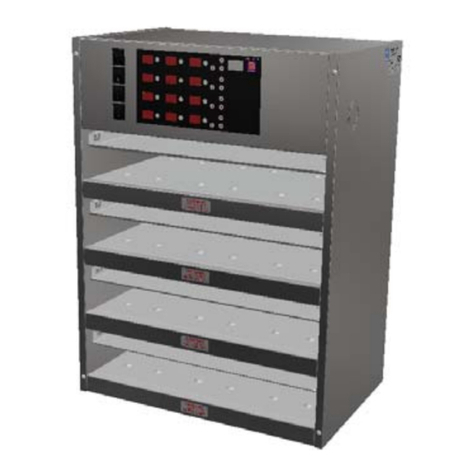
Marshall Amplification
Marshall Amplification DH5-4444DMK owner's manual
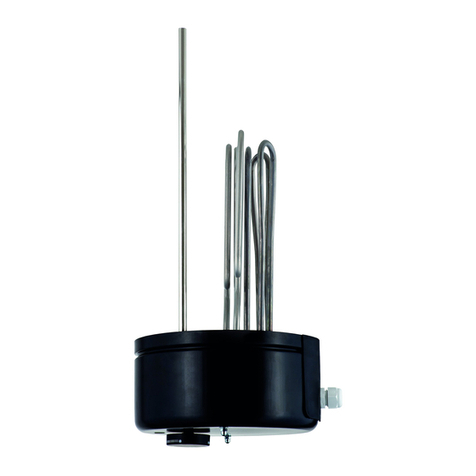
Austria Email
Austria Email EBH-KDW Operating and mounting instructions
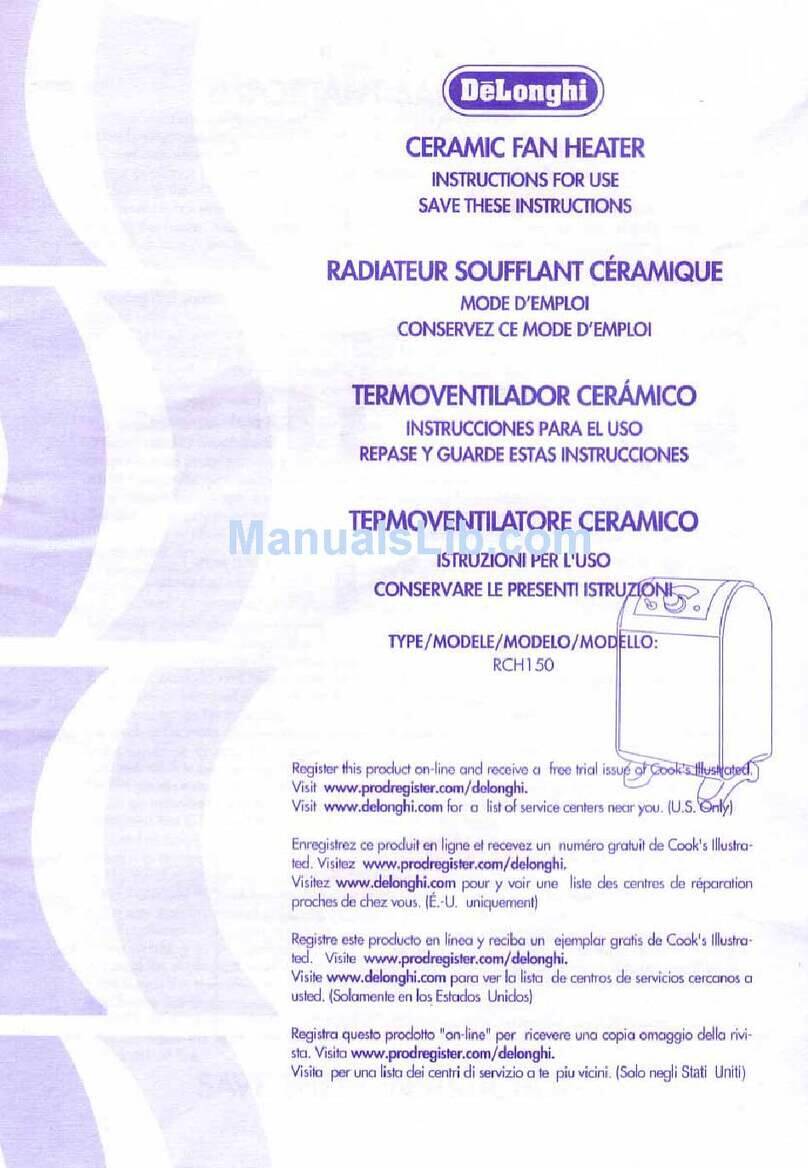
DeLonghi
DeLonghi RCH150 Instructions for use
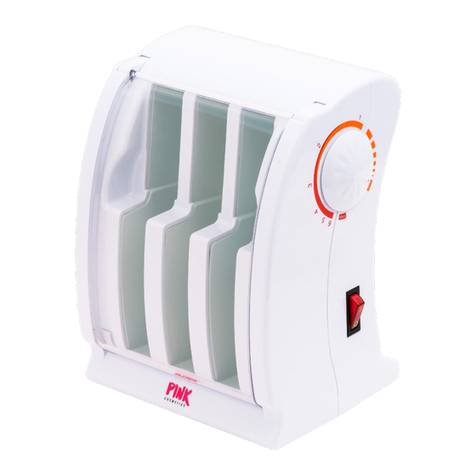
PINK
PINK PROFESSIONAL TRIPLE ROLL-ON WAX HEATER instruction manual
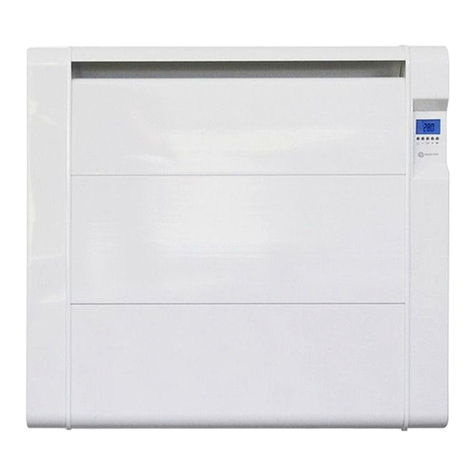
HJM
HJM ESD-C Original operating instructions
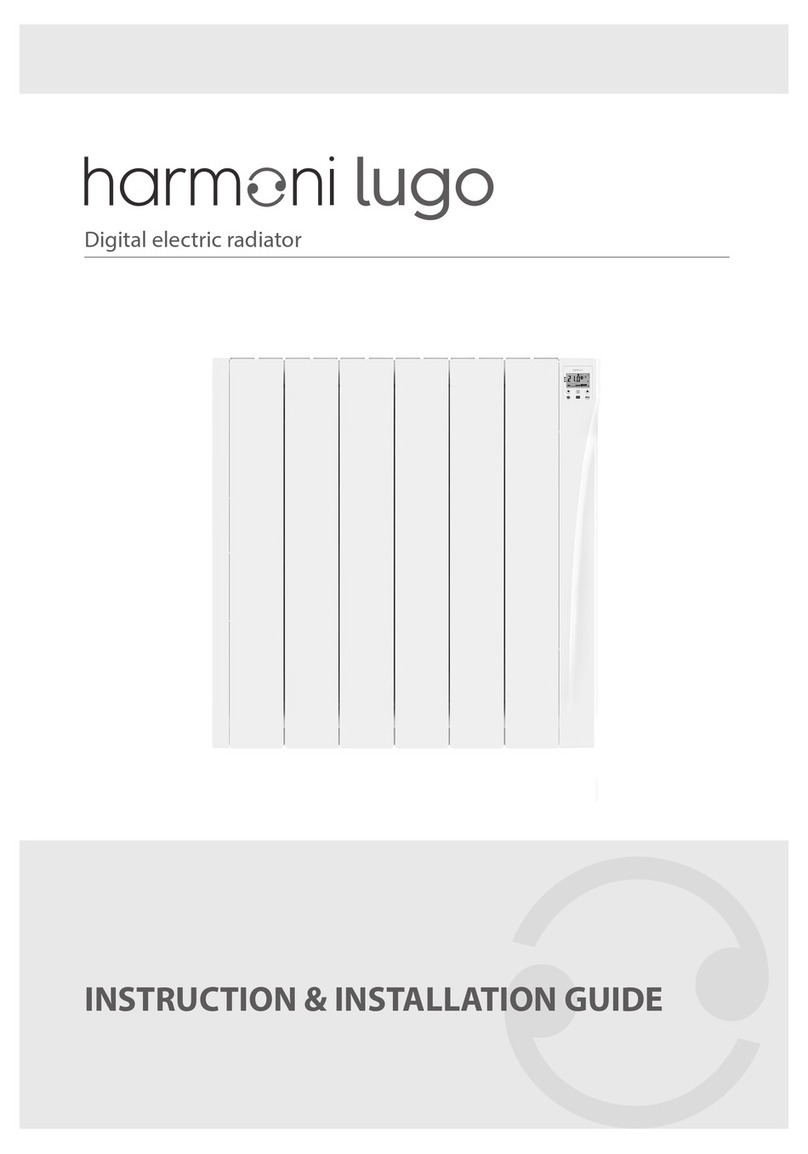
harmoni
harmoni LUGOHS440 Instruction and installation manual
